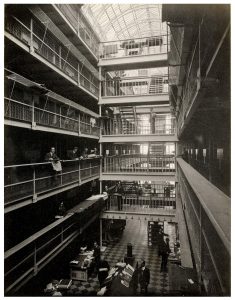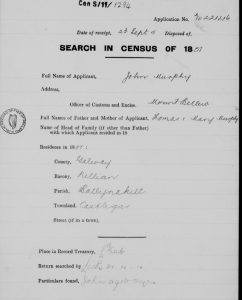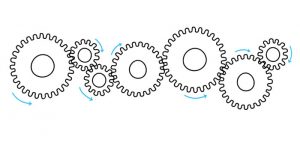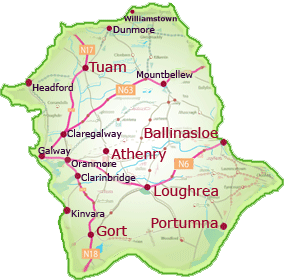The burning of the Public Record Office in Dublin in 1922 is the sole reason why we spend so much research time on ridiculously bitty little scraps of half-records. We’re like archaeologists trying to reconstruct branches of humanity from a piece of fossilised jawbone. Except that we also want to know who the jawbone’s parents were, who it married and the names of all its children.


The 1841 and 1851 census search forms are some of the most peculiar of these fragments. They came into existence because of the introduction of the Old Age Pension in early 1909. To qualify for the princely sum of five shillings a weeks, applicants had to be “of good character”, have an annual income of less than £31-10s and demonstrate that they were seventy or more.
But the state only began to register Irish births in 1864, more than twenty years after the relevant period. So a system evolved to get the PRO to use the 1841 and 1851 census returns for proof of age. Based on an address and parents’ names supplied by the applicant, either directly to the PRO or through an official of the Pensions Board based locally (Customs and Excise men in an unusually popular role), the Office would search the returns and confirm the necessary age.
After we went and blew up all the originals (thank you, Ernie O’Malley), only the PRO search forms survive for most areas. They are useful primarily for the information submitted by the applicants, but sometimes the search results include scribbled summaries of the others recorded on the form. In the sample 1841 image, John Murphy of Castlegar, Ballynakill Co. Galway has his parents confirmed as Thomas and Mary, but the “particulars found” include the fact that they married in 1833 and others in the household were Elenor (5), Patt (4) and Biddy (2). In the 1851 search, however, only “John aged 20” is noted.


At their best, then, they can come close to the full original. But how many exist? There are 32,472 forms in total for the Republic and 3,568 for areas now in Northern Ireland. This represents less than 1% of the households covered in 1841 and 1851 As with so much of Irish genealogy, luck is an essential ingredient.
The forms for the Republic are online at The National Archives of Ireland. The search interfaces at ancestry.com and FindMyPast.ie are better, with FindMyPast especially useful in the way it allows the easy retrieval of all forms from a particular parish. FindMyPast is also completely free. The FamilySearch version won’t let you look at the images outside a Family History Centre, for reasons only the LDS know.
The Northern Irish forms are on microfilm in PRONI and published by Josephine Masterson as Ireland 1841/1851 Census Abstracts (Northern Ireland) (Baltimore, MD: GPC., Inc., 1999), transcribed on ancestry.com.




